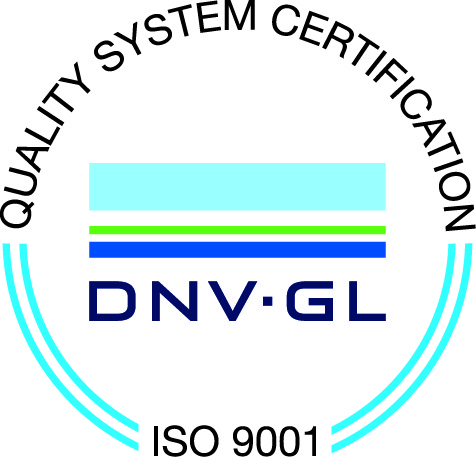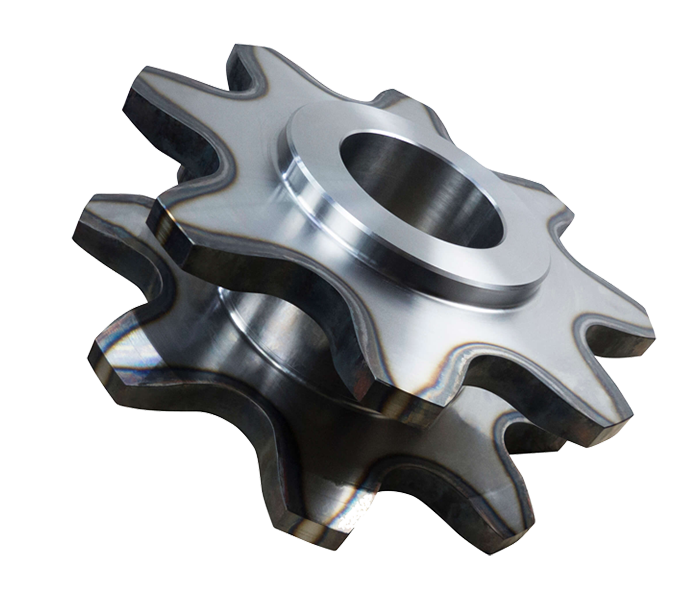
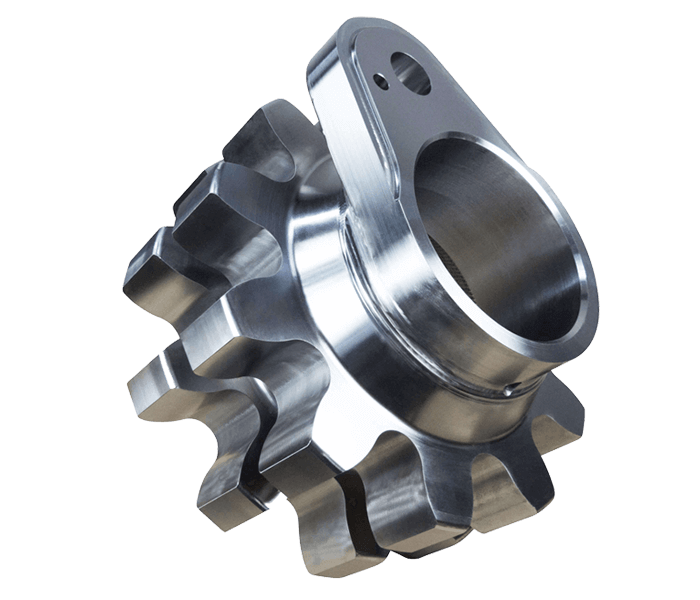
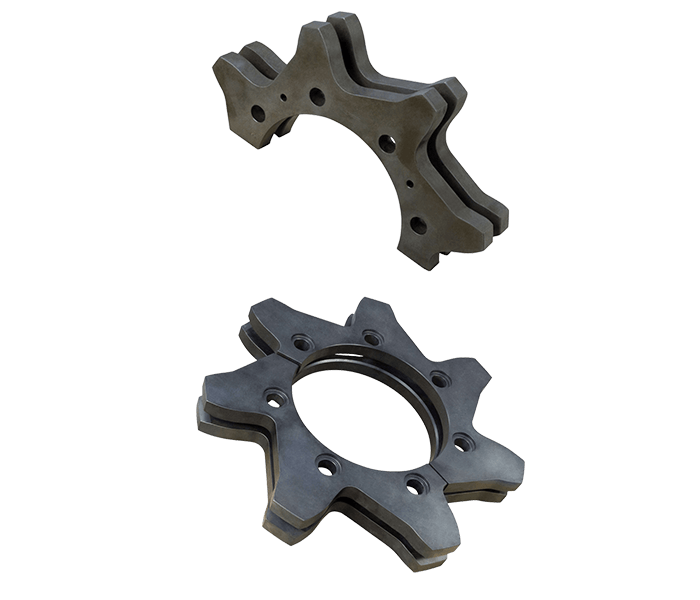
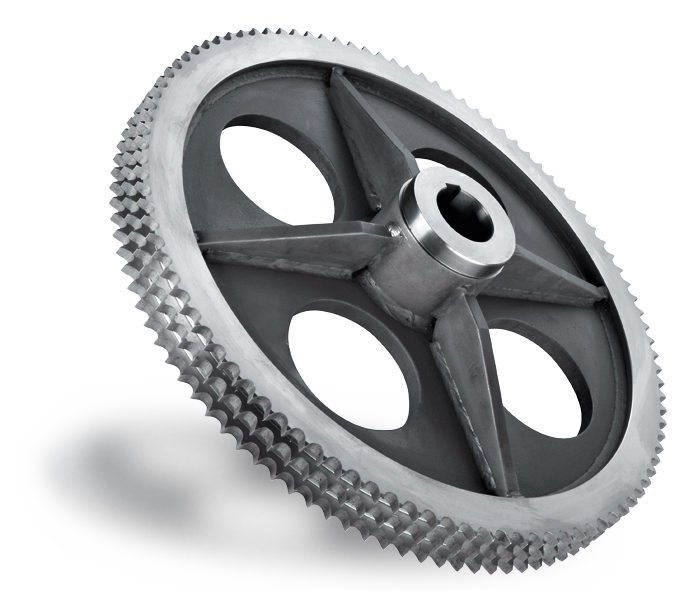
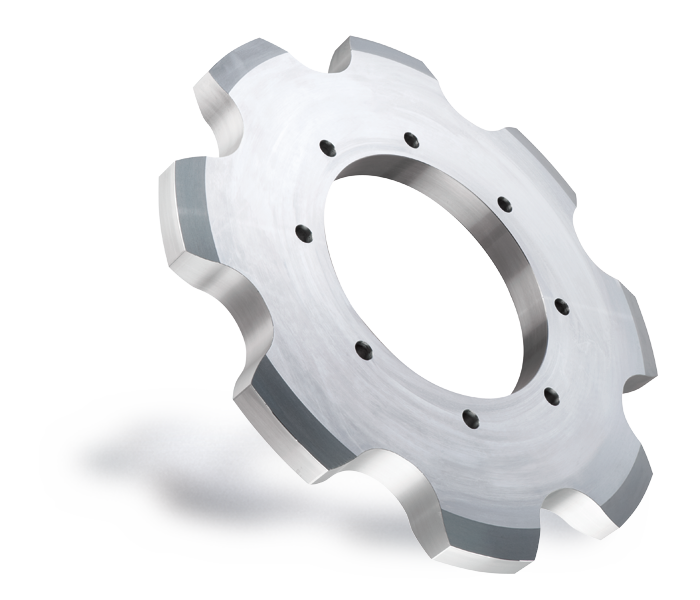
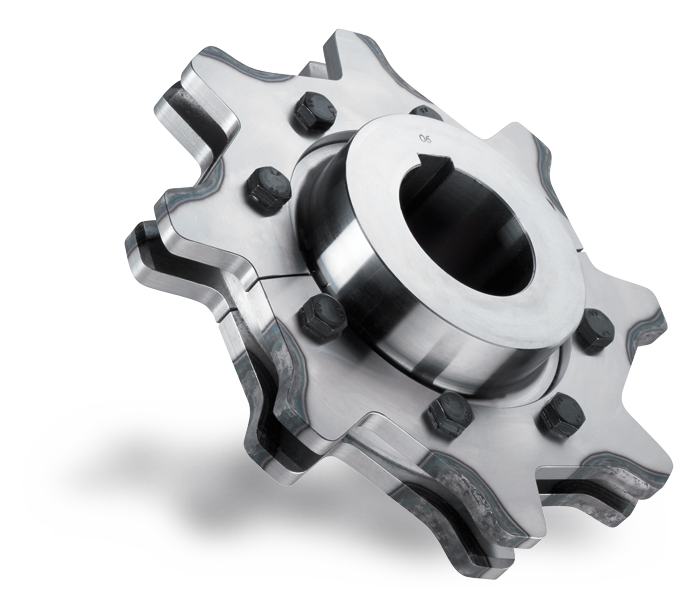
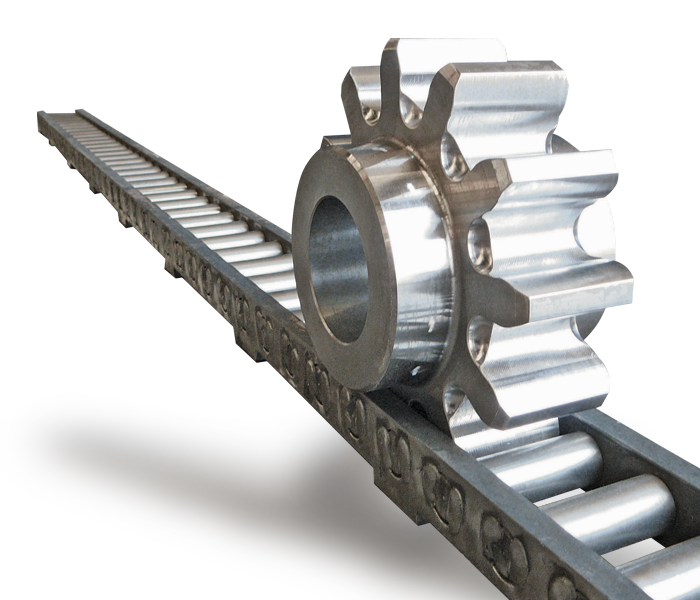
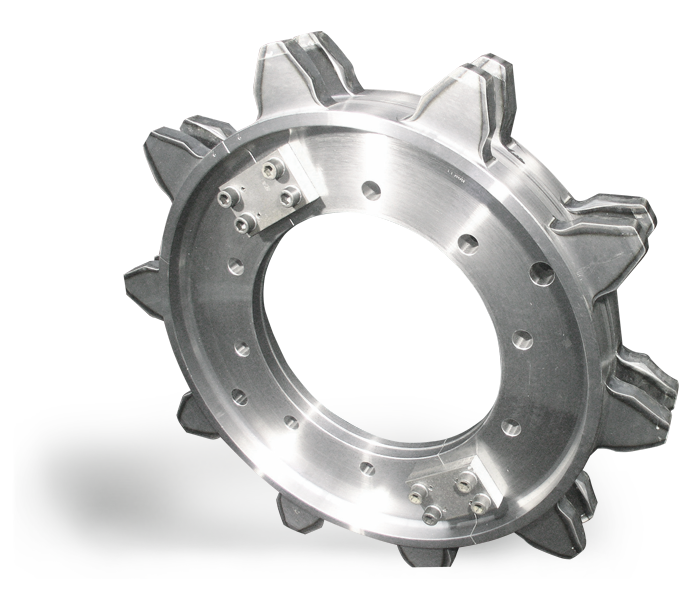
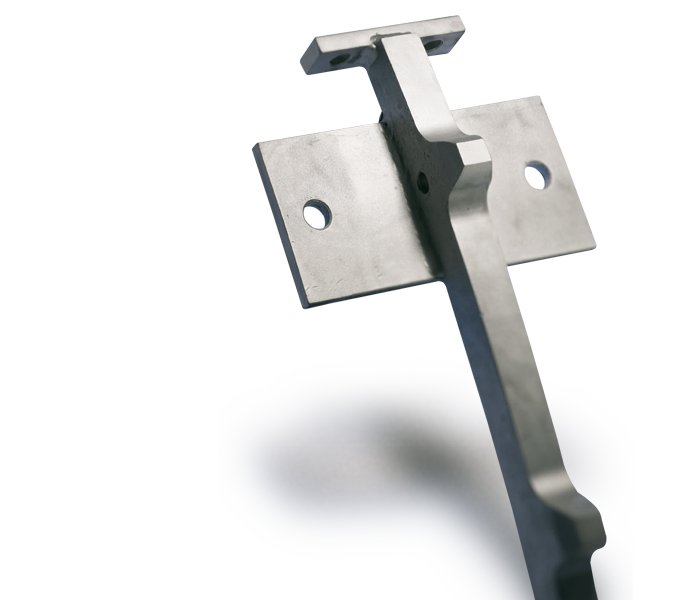
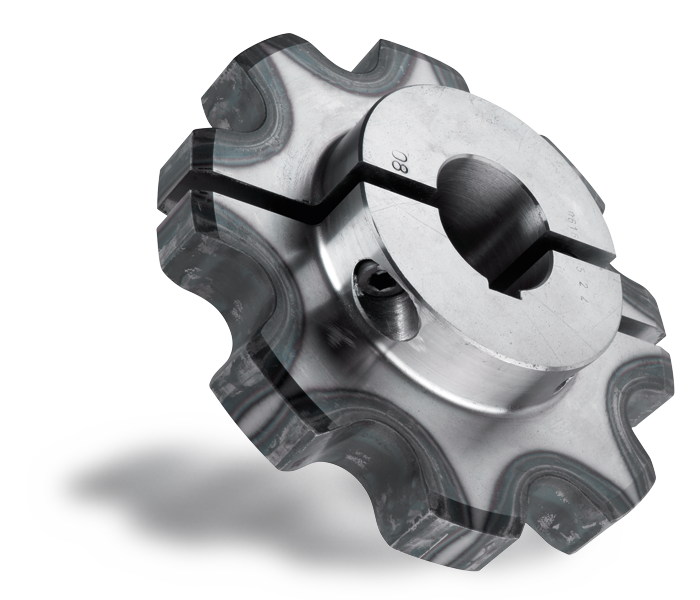

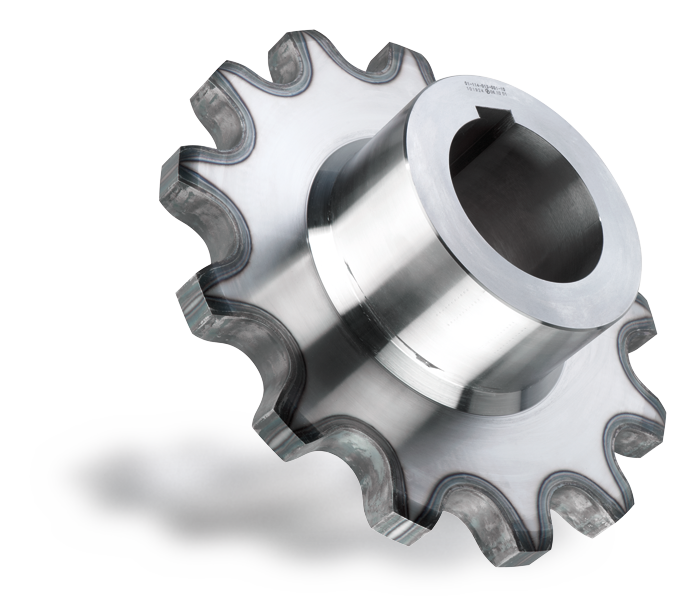
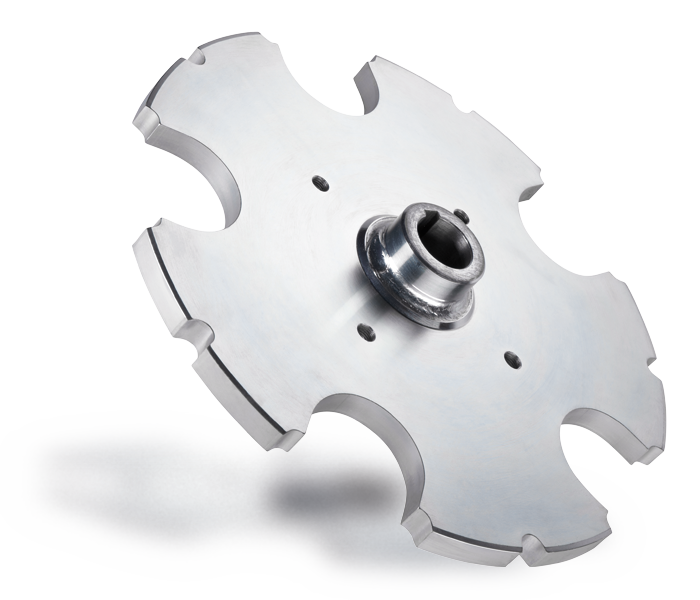
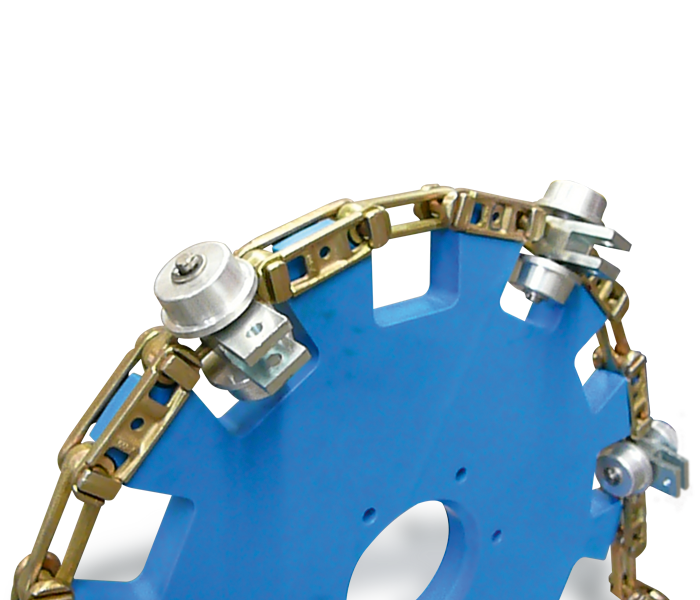
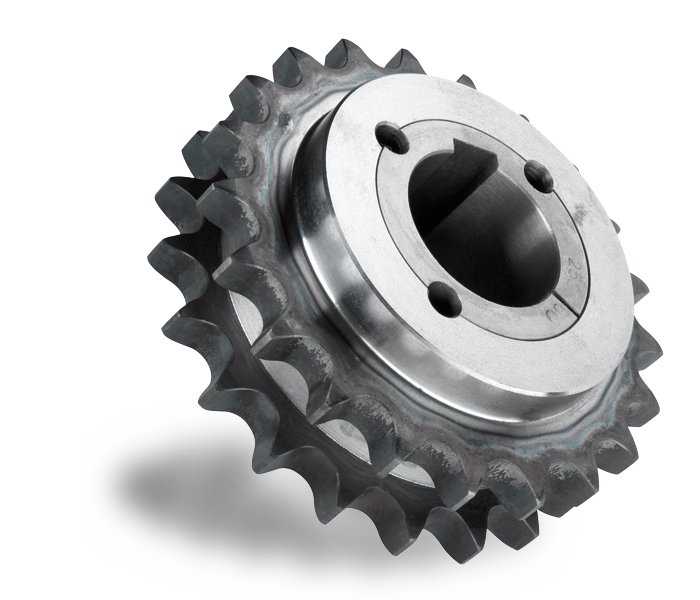
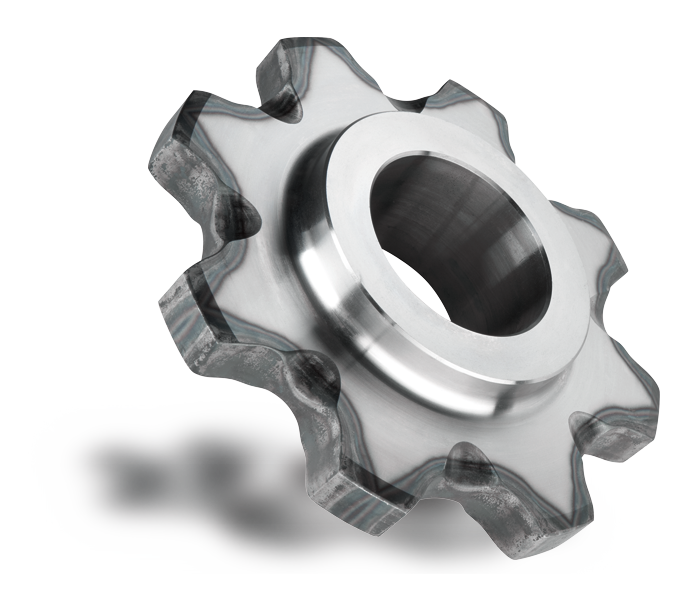
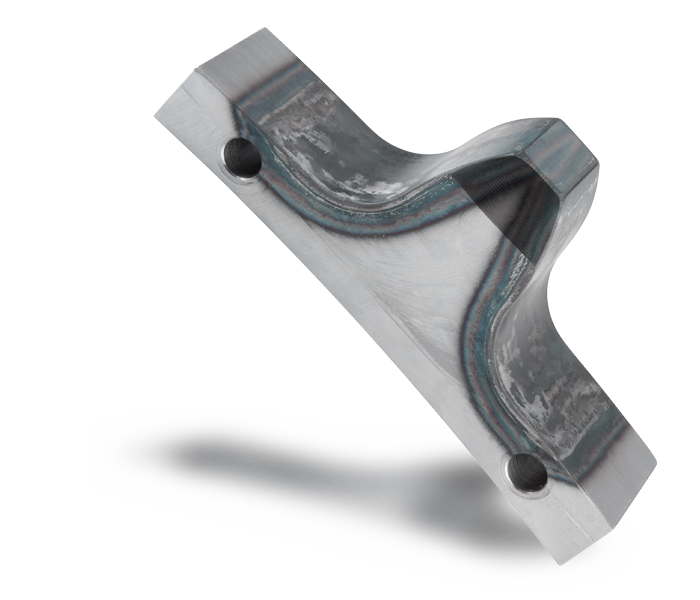
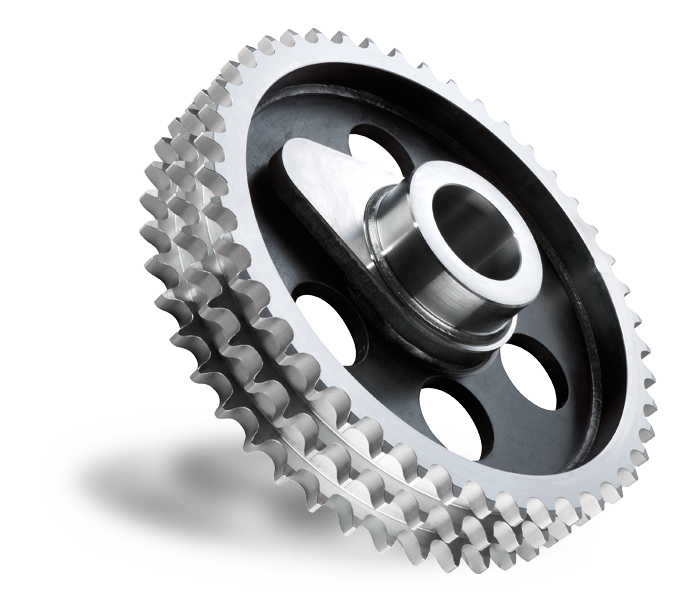
Sprockets
There are in principle two shapes of a sprocket or even sprockets, which are tied up to the function of the sprocket or sprockets. The first is the drive sprocket or drive sprockets, and the second is the conveyor belt sprocket or conveyor belt sprockets. Both are in principle sprockets, and the only difference between them is the fact that the drive sprocket or drive sprockets is / are used for driving a machine or system. Sprockets as well as a single sprocket can in principle be manufactured in any machinable material. In particular, they include the sprockets made of ST52-3 or. 1.0553, C45 or 1.0503 or 42CrMo4 1.7225. Of course, a sprocket can also be made of 1.4301 or .1.4571 V2A / V4A. A sprocket for the food industry is made of plastic, such as PA6G. Drive sprockets, roll sprockets and conveyor chain sprockets can also be galvanically plated. In order to reduce the wear, the tooth planks of the sprocket are inductively hardened. The old way of flame hardening is used only rarely. The structure of the material is modified by inductive hardening of tooth flanks of the sprockets for conveyor chains or sprockets for roller chains in such a way that a better resistance to wear is ensured and the service life of the sprocket is much longer.
Drive sprocket
Everyone knows a drive which turns a roller chain, such as those in bicycles or motorcycles. But the drive sprocket and roller chains can also be used in machine manufacturing plants – and in particular in heavy-duty machine building – since very large forces can be transmitted via the system of drive sprockets / roller chains. Duplex chains, simplex chains and also triple chains can be used in this area. Special chains in quadruple or sextuple version are rarely used. The gear rows in these sprockets are manufactured applying the gear hobbing procedure with the aid of special trimming tools. The current DIN ISO standard for roller sprockets and drive sprockets or roller chains is DIN ISO 606 released in 2012. The dimensions and the design of the sprocket and the sprockets for the roller chains are described in this DIN ISO standard. In this way it is ensured that the drive unit is perfectly aligned with the roller chain and roller sprocket. Please note that the old DIN 8189 and also DIN 8188 – American version – are no longer valid and that they are summarised in DIN ISO 606. The so-called ANSI chains and sprockets are also integrated in the new standard DIN ISO 606. You should also note that drawings and diagrams which describe the roller chains and sprockets, need to be updated.
Conveyor belt sprocket
The conveyor belt sprocket or conveyor belt sprockets are used for transportation and conveying of goods as well as people in combination with a conveyor chain. This is primarily used there where large volumes and weights have to be transported. A conveyor belt therefore has special parts which are designed to be able to convey the required quantity of goods. The sprockets and the sprocket for the conveyor belt are manufactured in CNC manufacturing plants. The sprocket is here not only designed to suit the conveyor belt but also to be able to convey the material which needs to be transported. Therefore it may happen that a conveyor sprocket is not only inductively hardened but also provided with grooves for accumulation of dirt. Otherwise, the dirt can jam the conveyor chain and consequently, damages can occur and the conveyor chain can even be destroyed. DIN ISO standards are also relevant for the conveyor chain. ISO 1977 for the conveyor chain sprockets defined the tooth shape for the conveyor belt. Furthermore, attention must be paid as to whether any potential particularities have to be considered regarding the working conditions. If conveyor systems are to be operated over the long term, it is crucial that the conveyor belt sprocket is precisely designed to fit the chain. This can be ensured for instance, by taking into consideration various influences during the construction phase with the aid of CAD.
Conveying chain types
There are many different chains: Gall chains as per DIN 8150, round link chains as per DIN 22256 or also as per DIN 22252, forked-link chains, roller chains, flyer chains, toothed chain, conveyor chains, bush conveyor chains, wooden bolt chains etc., as per DIN 8165, DIN 8164, DIN 8167, scrapper chains as per DIN 8177, bush chains as per DIN 8168 flat link chains as per 8175, DIN Berg 2251, steel bolt chains as per DIN 654, DIN 686, Gall chains as per DIN 8150, DIN 8151 draw bench chains as per DIN 8156, DIN 8157. We manufacture a sprocket suitable for every chain type – no matter whether the conveyor chains or drive chains or roller chains. Chains with long links are used in the agricultural machine building. Their inner parts are almost the same as those of Simplex roller chains pursuant to DIN ISO 606, and they only differ because they have a double split.
The bush conveying chain is the chain most frequently used for transportation of goods.
The chains are selected depending on the intended use. They can be found in machines and plants, sawmills, sewage treatment plants, power plants, in the food industry, painting lines, washing machines and in the passenger transport sector such as for instance, escalators, elevators and carousels. Large masses can be transported with the aid of chains in locks and boat lift systems.
Lantern pinion of the sprocket
A special feature of drive technology is a so-called lantern pinion. The lantern pinion is here conveyed via lantern pinion wheels. It consists of one rail or a bar and one superimposed bolt. The lantern pinion wheel is engaged via an involute in the bolts and in that way conveys the load. In this way very large weights can be conveyed. This topic is only partly described in literature. The design of a lantern pinion and lantern pinion wheel is often based solely on experience. The lantern pinion wheel is usually made of 42CrMo4, the involute tooth flanges are mostly inductively hardened. The involute profile is designed and drawn in a CAD system.
History
The Latin word for chain is “catena”, which is actually the word from which the old German word “Kutti” originated. The first chain was a jewellery chain (some 200 years BC) and was manufactured as a link chain. Many scholars have already dealt with the phenomenon of chains. The first pumping station and boiler suspensions appeared soon after, when the Celts invented the chain mail in the 4th century. Leonardo da Vinci often sketched toggle chains in his drawings, which are much similar to modern block chains and flyer chains.
The French Andre Galle invented in 1829 a chain named after him: Gall chain, the Swiss Hans Renold in England in 1880 invented the steel link chain and patented it. The industrial production then facilitated the quick propagation of chains in most different application areas, in which the conveyor chains and drive chains can be seen to this day.
200 BC, jewellery and prongs
100 BC, boiler suspension with link chain
1634 1. Patent for Ph. White (iron anchor chain)
1813 Th. Brunten invented a link chain with bar links
1829 André Galle invented the Galle chain
1880 H. Renolds obtains the patent for the steel link chain
Science
When it comes to science, almost all technical universities deal with the function principle of the chain/sprocket. There are numerous publications and calculations out there. But in most cases, these elaborations concentrate on specific applications. All information required for designing can be usually found in the relevant DIN ISO standards or also obtained by the manufacturer of the chains and sprockets.
